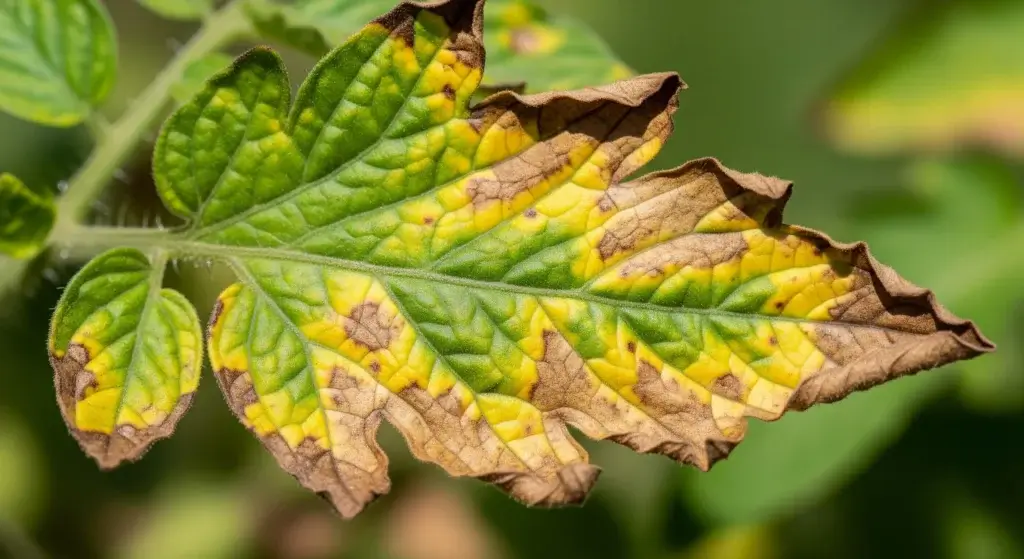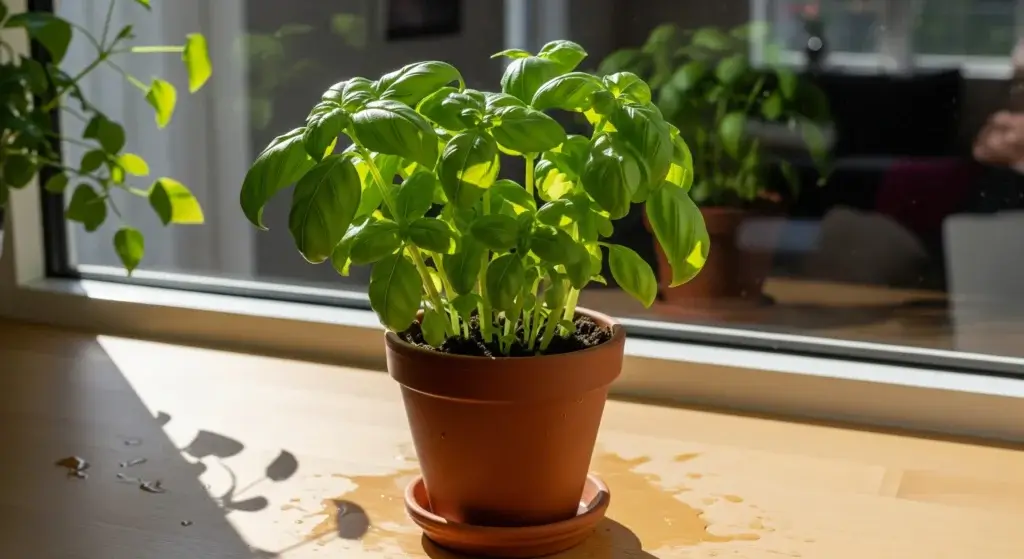
Aloe vera is basically the low-maintenance bestie of the plant world.
It looks good, heals your sunburns like a skincare superhero, and even freshens the air.
But come winter? Things can go south fast.
Suddenly, those juicy green leaves turn floppy, brown, or worse—mushy like overcooked noodles. Yikes.
Why the drama? Because aloe is a desert native—it’s used to sunshine, dry vibes, and the occasional cactus party.
So when winter rolls in with its cold temps, short days, and damp air, your aloe kind of freaks out. (Same, honestly.)
But don’t worry—this guide has your back.
We’ll show you exactly how to keep your aloe happy all winter long, from finding its cozy indoor spot to nailing the “less-is-more” watering routine.
Think of it as your plant’s winter survival plan—with you as the chill, cactus-savvy hero.
Why Aloe Vera Needs Special Care in Winter?
Aloe vera isn’t built for winter.
It’s basically the desert diva of houseplants—thrives in heat, hates the cold, and prefers to be left alone with its thoughts (and dry soil).
Unlike your grandma’s tough outdoor shrubs, aloe can’t handle chill vibes below 50°F (10°C). It grew up in the desert, remember? Warm weather, blazing sun, and barely-there rain are its thing.
Winter messes with all of that.
Here’s what stresses your aloe out when winter hits:
- Cold temps below 50°F (10°C) – It’s not Elsa. The cold does bother it.
- Way less sunlight – Aloe’s a sun worshipper. Cloudy days = moody plant.
- Too much water – With less sun and cold air, water just sits in the pot, which means soggy roots. Ew.
- Dry, heated indoor air – Your heater might keep you cozy, but it turns your aloe’s environment into a dry, dusty mess with zero airflow.
If you don’t switch up your care game, your once-thriving aloe can go full soap-opera: droopy leaves, root rot, or worst-case scenario—plant funeral.
- Read also: Best Soil for Aloe Vera Plants: A Guide to Thriving Succulents
- Read also: How to Save a Dying Aloe Vera Plant: Expert Tips That Work

Top 10 Aloe Vera Winter Care Tips
Here’s a breakdown of essential tips to keep your aloe happy and healthy during winter.
1. Bring aloe vera indoors (before first frost)
If your aloe’s been chilling on the patio all summer, it’s time to move it indoors before temps drop below 50°F (10°C).
Aloe and frost? Not friends.
Think of frost like the villain in a superhero movie—your aloe doesn’t stand a chance.
Pro move: Don’t shock it! Let it adjust to indoor life slowly by bringing it in for a few hours each day over a week. Aloe needs time to say goodbye to the great outdoors.
2. Place it in bright, indirect sunlight
Winter = less sunlight, and aloe is basically solar-powered.
Park it near a south- or west-facing window that gets at least 6 hours of light.
No good light? No problem.
Grab a full-spectrum grow light and let your aloe bathe in LED glory.
- Skip the direct afternoon sun through glass—it’s like a magnifying glass on a hot day. Toasted aloe is not the goal.
- Rotate the pot once a week so it doesn’t grow all lopsided like a plant doing the Leaning Tower of Pisa cosplay.
3. Chill on the watering
If there’s one way to send your aloe to an early grave, it’s overwatering it in winter.
When it’s cold, aloe goes into low-power mode—like your phone on battery saver.
It doesn’t need much.
Winter watering rule:
Only water when the soil is bone dry—we’re talking desert-level dry.
That’s usually once every 3 to 4 weeks. Yes, weeks. Not days.
- Water it like you mean it (a good soak), but make sure extra water drains out fast.
- Never let your aloe sit in a puddle—it’s a succulent, not a pool toy.
Bonus: Use a moisture meter or just do the good old finger test—stick it 2 inches into the soil. Dry? Go ahead. Damp? Back away slowly.
4. Use well-draining soil and pots
Aloe needs breathable, fast-draining soil—like a cactus version of Nike Airs.
If the roots sit in soggy soil, it’s basically game over.
Root rot is the plant version of foot fungus. Ew.
- Go for cactus or succulent soil—anything with sand or perlite mixed in is a win.
- Use a terra-cotta pot with drainage holes. It breathes and dries out faster.
- Skip plastic or ceramic pots with no holes—unless you want your aloe living in a mud spa. (Spoiler: it doesn’t.)
5. Monitor indoor temperatures
Aloe is kind of picky when it comes to indoor temps.
It likes things just right—somewhere between 55–75°F (13–24°C).
Basically, if you’re comfy in a hoodie, your aloe probably is too.
- Too cold? Don’t let it chill near drafty windows or doors that get icy at night. That cold air is like a slap in the face.
- Too hot? Keep it away from radiators, space heaters, or heat vents. Aloe doesn’t want to roast—it’s not a marshmallow.
Think of aloe like Baby Yoda—it needs a warm, stable environment with no drama.

6. Avoid fertilizing in winter
Winter is nap time for aloe. It’s not trying to grow, build muscle, or bulk up—it just wants to chill.
Feeding it now? That’s like offering pizza to someone in a deep sleep.
Weird and unhelpful.
- No fertilizer in winter. Your plant can’t use it, and it might even mess up its roots.
- Once spring hits and you see new growth? That’s your cue to break out a diluted succulent fertilizer—like giving it a gentle energy drink, not a triple espresso.
7. Increase humidity carefully
Winter air indoors is drier than a stale cracker, thanks to heaters running 24/7.
But hold up—while you might need lotion and lip balm, your aloe doesn’t want a facial.
- Add some moisture around the plant without getting it wet. Use a humidity tray or place a humidifier nearby—but not so close that your aloe feels like it’s in a steam room.
- No leaf-misting. It’s not a tropical fern, and soggy leaves are a fast track to rot. Mist the air, not the aloe.
8. Inspect for pests
Dry air can invite sneaky pests like spider mites, mealybugs, and aphids—basically the TikTok trolls of the plant world.
They show up uninvited and cause drama.
Keep an eye out for:
- Sticky sap (ugh)
- Tiny cotton ball clusters (mealybug party = not cute)
- Leaves that look spotty, curly, or just off
If you spot anything sus, hit ‘em with neem oil spray or insecticidal soap—think of it as aloe’s bug-repelling skincare routine.
9. Prune dead or damaged leaves
If your aloe starts looking rough—yellow leaves, mushy spots, or crispy bits—don’t freak out.
Just grab some clean scissors and give it a little trim.
- Cut off any sad, squishy, or dead leaves at the base.
- Use clean, sharp scissors (no rusty kitchen junk, please).
- This helps your aloe focus on growing fresh, healthy leaves instead of wasting energy on the doomed ones.
Think of it as aloe’s winter glow-up. Out with the old, in with the new.
10. Don’t repot until spring
Even if your aloe looks squished or root-bound, resist the urge to give it a bigger pot in winter.
Aloe’s in chill mode—it’s not trying to redecorate its living space right now.
- Repotting during dormancy can stress it out, and it might not bounce back.
- Wait until spring, when it’s awake, growing, and ready for a fresh start.
It’s like trying to move apartments while you’re half asleep—just wait until you’re caffeinated and alert (aka, springtime for aloe).

Common Aloe Vera Winter Problems & How to Fix Them
| Symptom | Likely Cause | Solution |
| Soft, mushy leaves | Overwatering or cold stress |
Let soil dry out; move to warmer location
|
| Pale or stretched leaves | Lack of sunlight |
Move closer to a window or use grow light
|
| Brown leaf tips | Dry air or chemical exposure |
Increase humidity; use filtered water
|
| Slow growth | Normal in winter |
No action needed—resumes in spring
|
- Read also: Why Is My Aloe Vera Turning Brown? Common Causes & Solutions
- Read also: 10 Essential Tips for Winter Garden Pest and Disease Prevention
Aloe Vera Winter Care FAQ
It can survive, but not thrive. Consider a grow light if natural light is lacking.
Not directly. Mist the surrounding air sparingly to avoid leaf rot.
Between 55–75°F (13–24°C). Avoid extreme cold or heat.
It’s possible, but spring or summer is ideal. Pups may struggle to root in winter.
Conclusion: Your Aloe Can Thrive in Winter With the Right Care
Aloe vera might look like a chill, no-fuss plant—but winter can throw it off its game.
The good news? With just a few smart moves—less water, more light, and the right vibes indoors—you can help it ride out the cold like a true succulent superhero.
Stick to these winter care tips and your aloe won’t just survive the season—it’ll come out of dormancy in spring like it just leveled up.
Think of it as the glow-up montage in a movie: a little rough at first, but totally thriving by the end.
So grab your watering can (but not too often), adjust that windowsill lineup, and get ready for your aloe to slay all season long.



